Deploying Microsoft Office applications using Microsoft 365 Business (and Intune)
Microsoft 365 Business is an excellent subscription–the best bundle available for the money in my opinion (in the SMB space). One of the benefits of this subscription is the ease of deployment for Office 365 Business (the desktop apps)–shaving precious time off any new PC setups. It is a trivial matter to activate this “auto-deployment” feature using the initial setup screens in the Microsoft 365 Admin center.
You can also turn it on later, from the Device actions card (choose Manage Office deployment).
However, there are some known limitations to this feature that you should read about. Namely, it works best if the target PC does not already have a pre-existing installation of Office. E.g. if 64-bit installs are present, or an MSI version is already installed, then the new subscription-based, “Click-2-Run” version of Office will not take.
However, did you know that this fancy app deployment feature is really just leveraging Microsoft Intune in the background? If you dive under the hood of Intune, you will find that it is in fact possible to design your own app assignments, and tweak the settings further via the Intune management portal. For example, you can instruct the device to uninstall other Office versions (.msi), if they exist. As well, you can push other applications, if you choose, from this same interface.
This makes transitioning both new and pre-existing PC’s to 365 Business much easier at scale. As the devices join up to Azure AD (either directly, or in hybrid mode with on-premises AD), the device enrollment feature will check in with Intune for its policies, which include application assignments.
How to manage application deployments in Intune
Navigate to the Intune portal from Admin centers > Microsoft Intune. Find Client apps > Apps.
Edit the Office Desktop Suite policy (ignore the references to ProPlus since you do in fact have a Business subscription with Microsoft 365 Business). Here you can see some interesting additional settings. Check out Properties > App Suite Settings, and find the option to Remove other versions of Office (MSI) from end user devices.
You will notice that this default policy is configured to deploy 32-bit versions of the Office apps, but if 64-bit is a requirement in your environment, it would also be possible to configure a policy to deploy 64-bit, instead. Try building your own app assignments. You can choose to assign apps from the Andriod, iOS and Windows Stores. You can configure Office 365 software assignments to both Windows 10 and macOS. As well, you can deploy Line of business applications and Win32 apps (MSI) also.
Just click on Add to add a new app. Let me create a policy that will deploy C2R versions that are 64-bit instead of 32-bit, and I’ll include Visio, since I have a subscription for that software also. In this example I chose Office 365 Suite > Windows 10.
Then under Configure App Suite, choose the applications you want to deploy; I do not include OneDrive (Groove) or Skype for Business. But I will add Visio Pro.
Then under App Suite Information I just have to fill in a name and description for this App suite.
Click OK and switch to App Suite Settings to choose your options: 64-bit, the Monthly update, and Latest version. Since my users already have 32-bit MSI Office installs, I want to Remove other versions of Office (MSI) from end user devices. I will also choose to Automatically accept… for the EULA. Click OK.
Last we just have to assign this application suite. Click on Assignments, then Add group.
For Assignment type, you would choose Required. Notice that one of the other assignment types available is Uninstall, so keep in mind that you can use this option, if you ever need to remove a previously assigned version, such as a 32-bit assignment for Click-2-Run.
To select a group, pick Yes for Make this app required for all users, then Select groups to include (I chose the All Users group in this simple example).
Conclusions
Keep in mind this is just one simple example of what is possible using Intune for application deployment. Interestingly, deployment of Microsoft Teams to Windows 10 is not an option using this method (at least not right now). The best method for accomplishing a Windows 10 Teams deployment at this time is still a PowerShell script (and the script can be pushed using Intune–I will likely do a post on this process soon). Nevertheless you can see there are quite a few options here for you, with most other applications.
Since the Microsoft 365 Business subscription was originally developed/released, there have been some significant changes in licensing. Intune did not used to be one of the bundled packages, even though the subscription was essentially leveraging this technology in the background, exposing only a sub-set of the features via the Microsoft 365 Admin center. We are anticipating some new updates to the Admin center soon, and I would be surprised if we did not see a few more feature sets from Intune added into this simplified UI moving forward, now that the subscription is officially part of the Microsoft 365 Business bundle. In the meantime, however, just know that the full power of Microsoft Intune is there for you–so feel free to explore and tweak it to your liking. More on this to come…

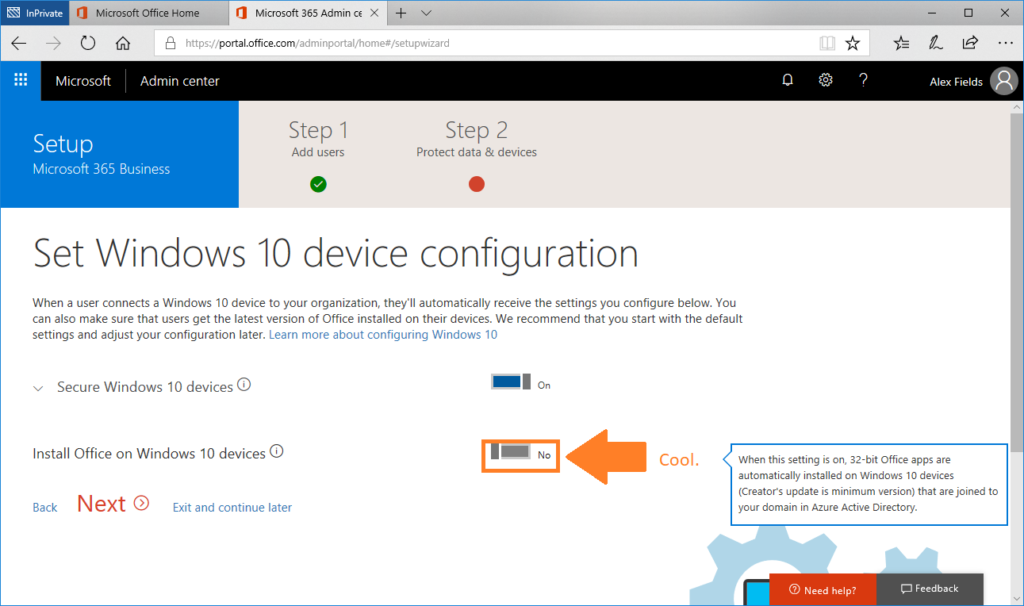
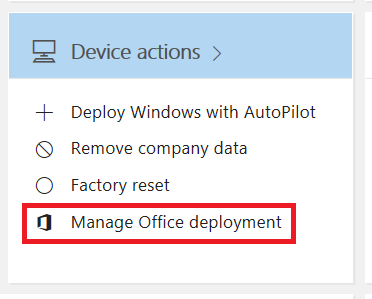
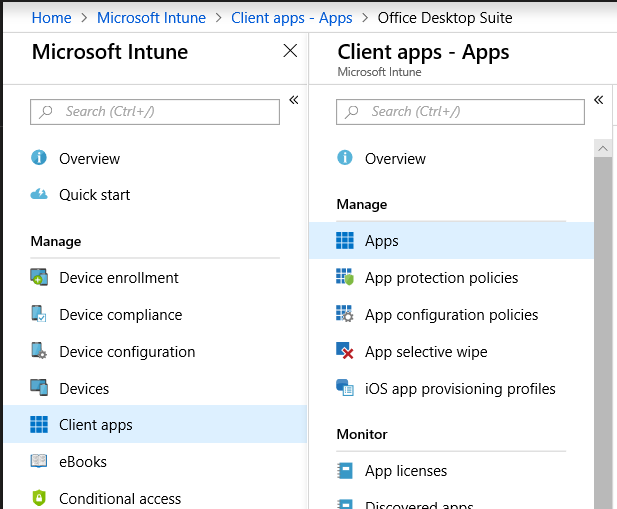
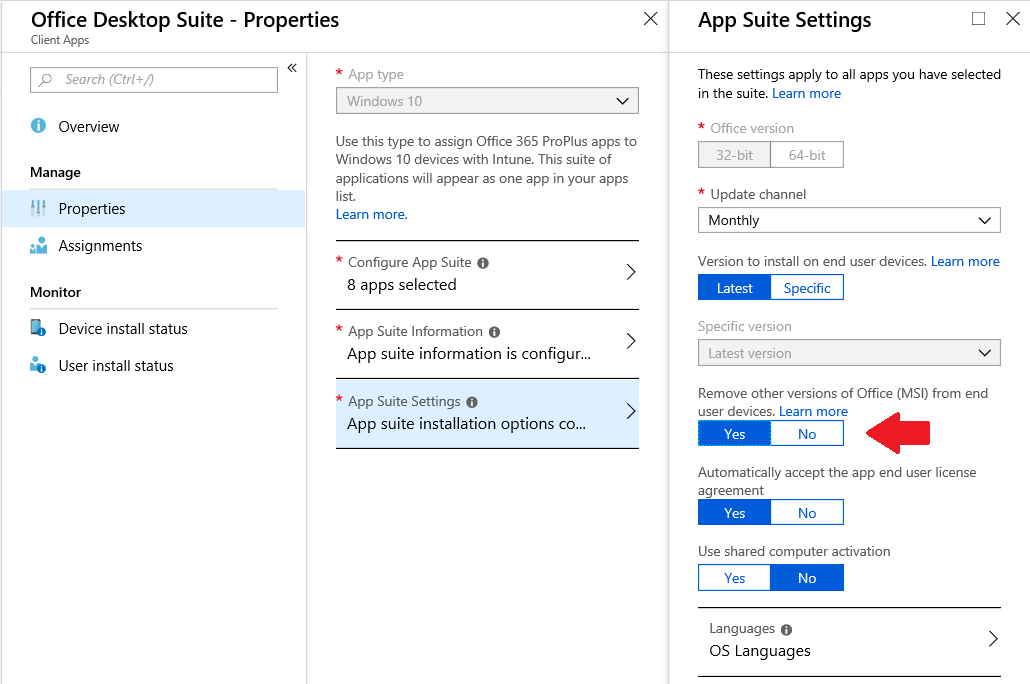
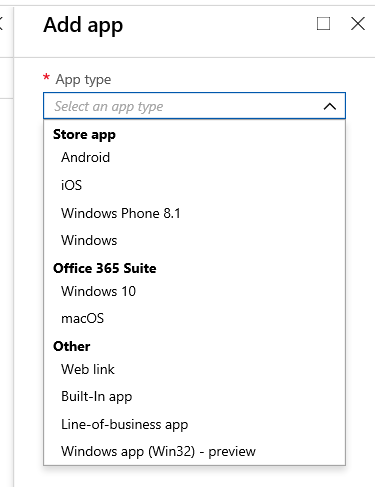

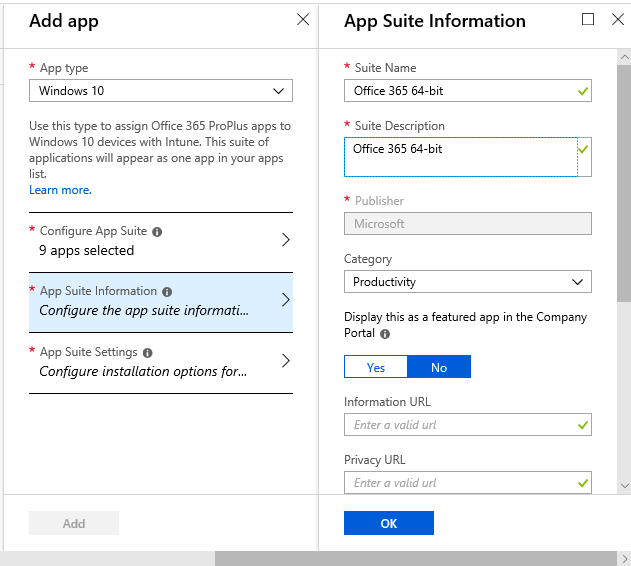
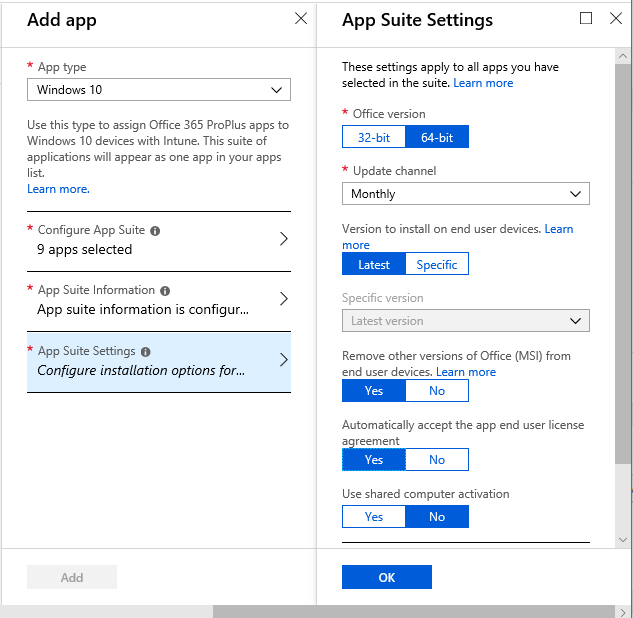
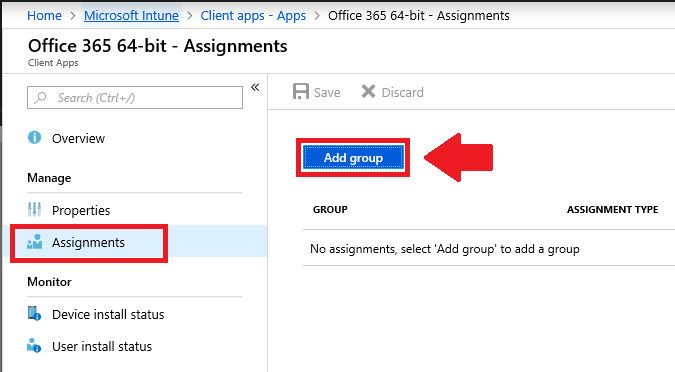

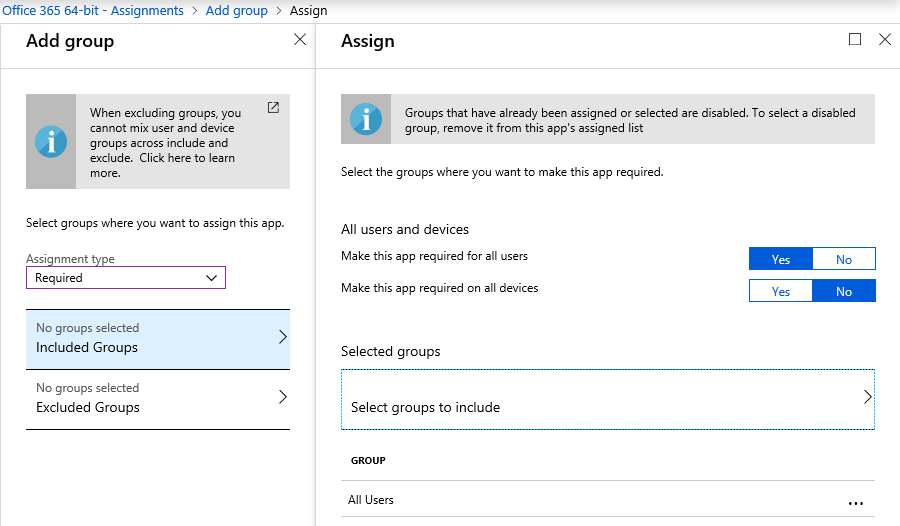



Comments (5)
Though the MSI was deployable for MS Teams through Intune and that did seem to work, but I’d much prefer a more streamlined method for deployment for it!
There is a PowerShell method–use a script and push the script via Intune, which is more or less the same type of hokey thing…but I agree–it should just be an option that I can push from the default policies, like the other apps.
Hi!
I read here: https://docs.microsoft.com/en-us/intune/apps/apps-add-office365 in the purple box that installing Office 365 Business isnt supported with intune. is that a relik of the times before full intune in microsoft 365 business or is it referring to office 365 business, the other license? We have a case where a customer shifted from Office 365 E3 to Microsoft 365 Business and to get far suporior functionality at the same cost. the computers were all converted from AD to pure AAD by disjoun/rejoun and new user profile and then enrolled into intune. this cause the computers to report Office 365 ProPlus as office version but function as licensed products except for 1 computer that never was intune enrolled. that user have problems where Office has locked down as unlicensed red bar and all. intune joined devices sometimes show a text at the top of the application window “(unlicensed product) but only sometimes and fully works. so. how do one now in late 2019 get Office 365 Business installed on a Microsoft 365 Business licensed computer?
I have not found anything about this being unsupported–this document is sorely out of date. It is totally supported, and I always implement it. In fact, the setup wizard used to include the option to deploy the applications right from the admin center. It is still in the legacy admin center but I don’t see it in the new one yet. Anyway, be sure to review this article.
Also see here–like many places the documentation that is out there seems unaware of Microsoft 365 Business, which is NOT Office 365 Business or Business Premium, or anything else, but it’s own special beast that gets to play with many features in the enterprise space but for less $.